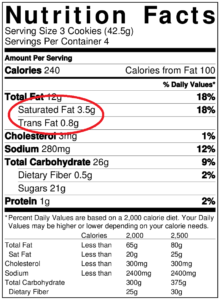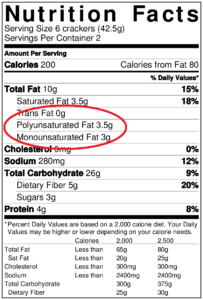This is the 5th post on how to make the 2015-2020 Dietary Guideline’s Key Recommendations a part of your life. This post will help you choose healthy fats. Fats are discussed in the “limits” of the Dietary Guidelines, saying “a healthy eating pattern lim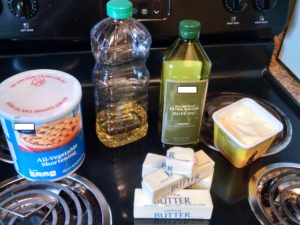 its saturated fats and trans fats…” However, the guidelines also state a healthy eating pattern should include oils.
its saturated fats and trans fats…” However, the guidelines also state a healthy eating pattern should include oils.
What are the Recommendations?
Americans with 2,000 calorie diets should have roughly 5 teaspoons of oils daily. In contrast, Americans are advised to limit their saturated fat intake to 10% of calories (or 200 calories for a 2,000 calorie diet). The Guidelines also recommend to consume as little trans-fat as possible.
What’s the Difference Between Fats?
Saturated fats are solid at room temperature: butter, margarine, shortening, and lard. Unsaturated fats are typically liquid at room temperature; thus, oils are usually low in 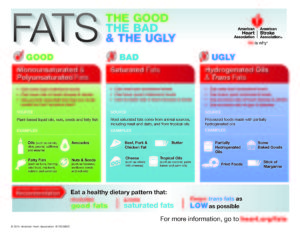 saturated fat. A few foods are high in saturated fat but are still liquid at room temperature: coconut oil, palm oil, and whole milk. You should still treat these as saturated fat and limit consumption.
saturated fat. A few foods are high in saturated fat but are still liquid at room temperature: coconut oil, palm oil, and whole milk. You should still treat these as saturated fat and limit consumption.
Our oils include monounsaturated fats (such as olive, peanut, or canola oil) or polyunsaturated fats ( such as soybean, corn, and sunflower oil). Additionally, many fish are also high in polyunsaturated fats.
Trans fats occur naturally in small amounts in some foods, but half the trans fats we consume are produced through the process “hydrogenation.” These trans fats are listed as “partially hydrogenated oils” in ingredient lists and aid foods’ shelf-life.
Why is Limiting Saturated & Trans Fats Important?
You want to limit these fats because they are both linked with poor health outcomes:
- Both raise LDL Cholesterol (which is our unhealthy/Lousy cholesterol).
- High consumption of saturated fat is linked with heart disease.
- All consumption of trans fat is linked with heart disease and heart attacks. The FDA no longer recognizes Trans fats as safe and has issued a ruling that all food companies must remove partially-hydrogenated oils by 2018.
Why is Consuming Oils Important?
We must consume fats because they complete important functions:
- Fats preserve food, improve its consistency, & help it taste good.
- Fats dissolve Vitamins, A, D, E, & K.
- Fats insulate our bodies and protect major organs.
- Fats help transport nutrients.
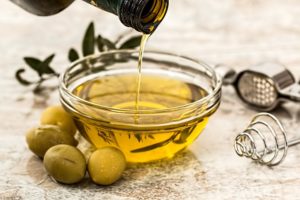 Because Oils are low in saturated fat, they are the best way to obtain fat. Unsaturated fats do not raise LDL (Lousy) cholesterol levels, may increase our HDL (Healthy) cholesterol levels, and provide essential fatty acids.
Because Oils are low in saturated fat, they are the best way to obtain fat. Unsaturated fats do not raise LDL (Lousy) cholesterol levels, may increase our HDL (Healthy) cholesterol levels, and provide essential fatty acids.
However, ALL fats provide 9 calories per gram (there are roughly 5 grams of fat in 1tsp). So we must be careful to stay within the Guideline’s recommended oil intake. After all, too much fat is linked with:
- heart disease
- high blood pressure
- type II diabetes
- some cancers
How to Choose Healthy Fats:
- Purchase more oils(PDF) and fewer solid fats
- Try swapping liquid oils for butter in baking! LiveStrong provides pointers for this. Also try recipes which substitute applesauce for butter.
- Use cooking methods that don’t require much fat: grilling, baking, and roasting.
- When you fry foods(PDF) use oils.
- Read nutrition labels to identify how much trans fat and saturated fat is in a product.
- Many health-focused products also list their polyunsaturated and monounsaturated fats.
- Eat food naturally low in fat and don’t focus on speciality “low-fat” products. Naturally low-fat foods are often the healthiest, such as fruits, vegetables, and whole grains

